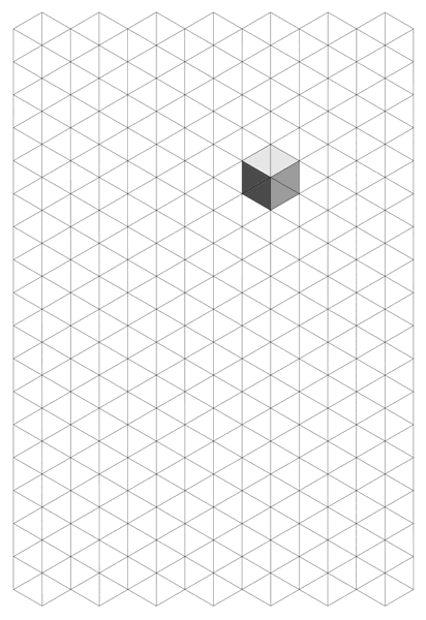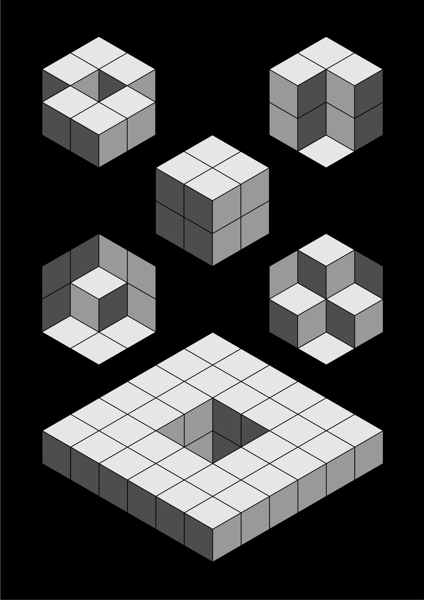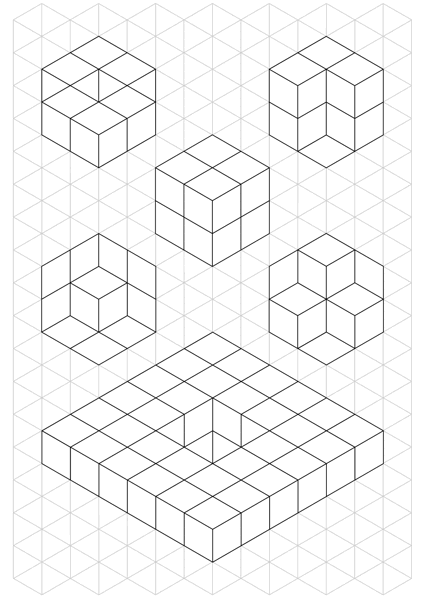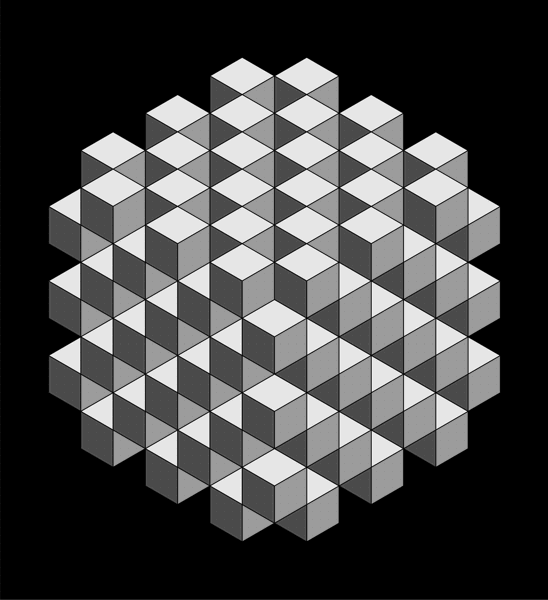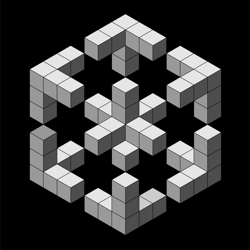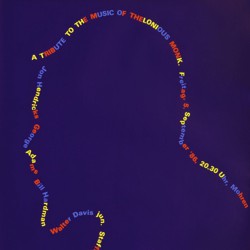Isometric Drawing
Isometric Drawing is a technique, like perspective drawing, that is used to represent three-dimensional forms on a two-dimensional picture plane.
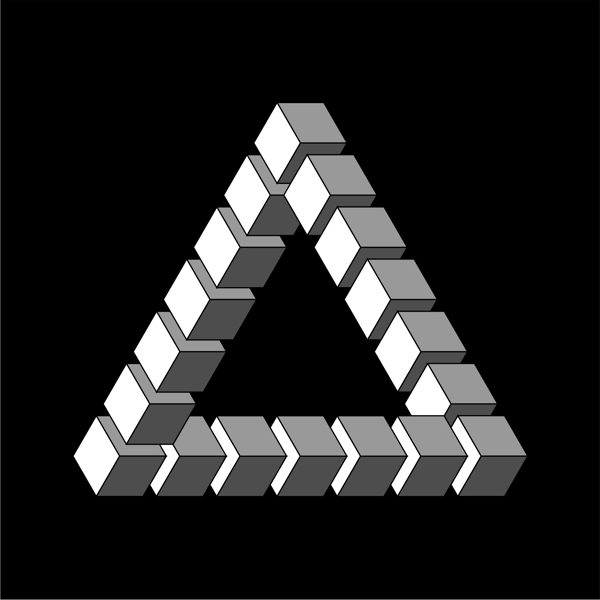
Isometric Drawing
Isometric Drawing is a technique, like perspective drawing, that is used by artists and designers to represent three-dimensional forms on a two-dimensional picture plane.
In these lessons we explore the graphic qualities of isometric drawing, as opposed to its functional qualities, and use them to create an Isometric Poster Design.
Isometric Drawing vs Perspective Drawing
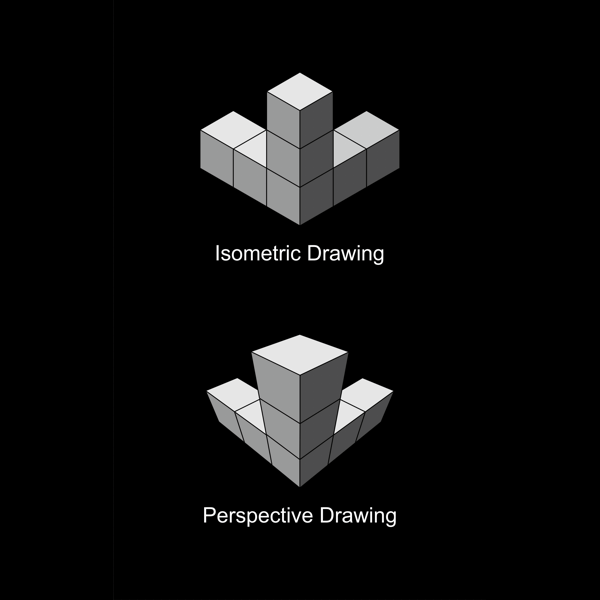
Isometric and Perspective Drawing
Although isometric drawing performs a similar function to perspective drawing, they have some distinct differences in application:
- Perspective drawing maps the diminishing size of objects as they recede from view.
- Isometric drawing maps all objects of equal dimensions as the same size, regardless of their position.
- Perspective drawing distorts the angles and shapes of objects to suggest form. It is most commonly used by artists to suggest depth and distance.
- Isometric drawing uses fixed angles and shapes to construct form. It is most commonly used by architects, engineers and designers as it contains measurable information.
In our perspective drawing it is hard to tell whether you are looking at cubes or cuboids as the receding shapes are foreshortened. Our Isometric drawing makes the cubes more obvious due to their equal dimensions. The word 'isometric' is derived from the ancient Greek for 'equal measure'.
The Isometric Cube
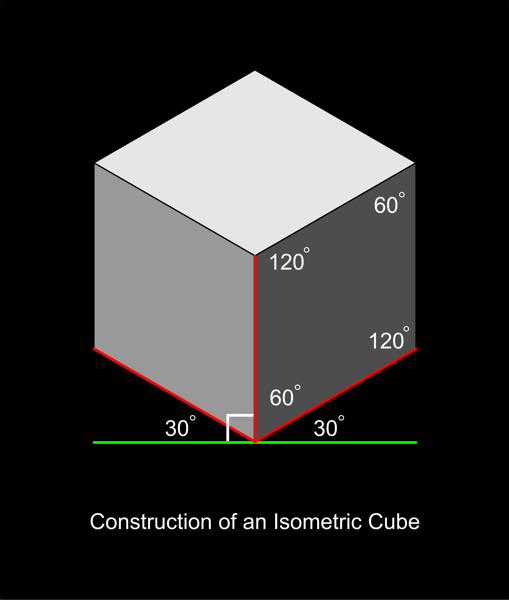
Isometric Drawing of a Cube - 1
The Isometric Cube is the building block of isometric drawing. Its three dimensions are represented by three equal planes [1] that sit on three axes (red lines). The vertical axis sits at 90° to the horizontal (green line) while the two horizontal axes sit at 30°.
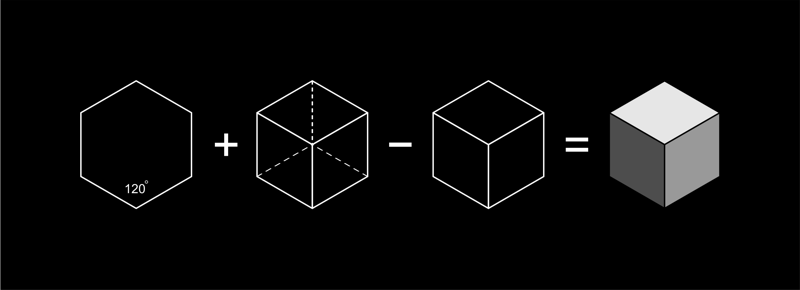
Isometric Drawing of a Cube - 2
Another method of constructing an isometric cube is illustrated:
- Draw a regular hexagon [2].
- Draw its diagonals which become the interior edges of the cube.
- Erase the dotted sections to create the three front planes of the cube.
- Shade each plane with an appropriate tone to enhance its form.
The Isometric Grid
The isometric grid is a framework that is used to design isometric forms. The grid is based on the same proportions as an isometric cube, composed of vertical lines and 30° diagonals that intersect at equal intervals.
Isometric Sketches
(swipe the image back and forward to view)
As illustrated in our example, use the isometric grid to create a sketch sheet that explores the creative possibilities of isometric forms.
-
This is a process of trial and error where you search for combinations of cubes that look visually interesting.
-
Download an isometric grid (.pdf) that you can print to use for your drawings.
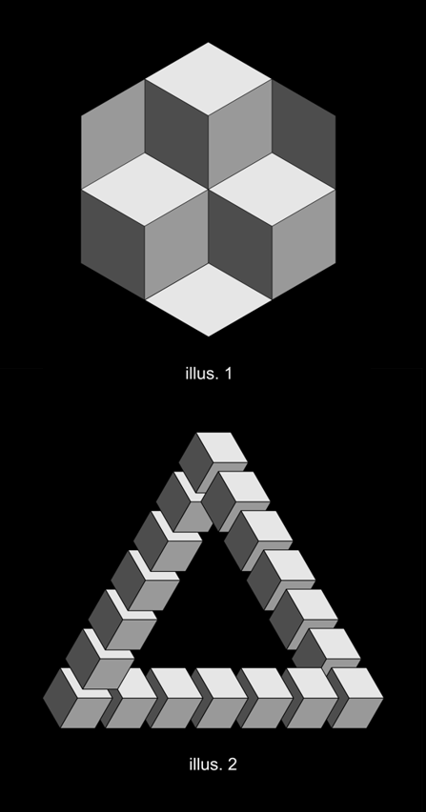
Isometric Ambiguity and the Penrose Triangle
One thing you will notice in our sketches of isometric forms is their spatial ambiguity. Planes flip back and forward in view, advancing and receding as they have none of the foreshortening that you find in perspective drawing (illus.1). Both the nearest and furthest forms are the same size, thereby confusing your visual interpretation of the image. This is a quality of isometric drawing that artists and designers often exploit. The Penrose Triangle (illus. 2) - which makes the impossible possible - is a compelling example.
Isometric Forms
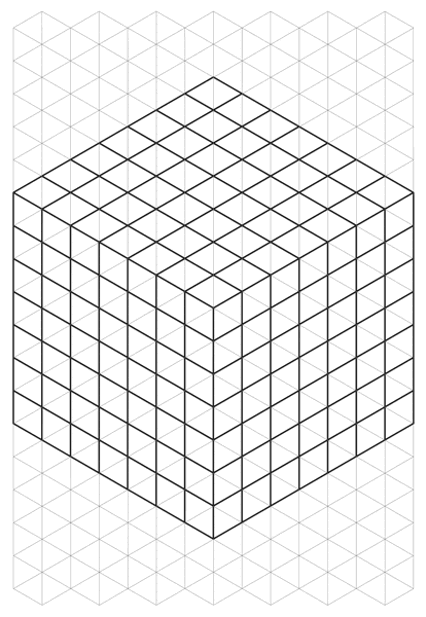
Isometric Framework
Once you begin to feel confident about sketching isometric shapes try to create some larger isometric forms.
- For this stage we started with a large isometric cube which serves as a container or frame for our forms.
The images in our slide show display the results of our attempts at creating isometric forms within our cubic framework.

